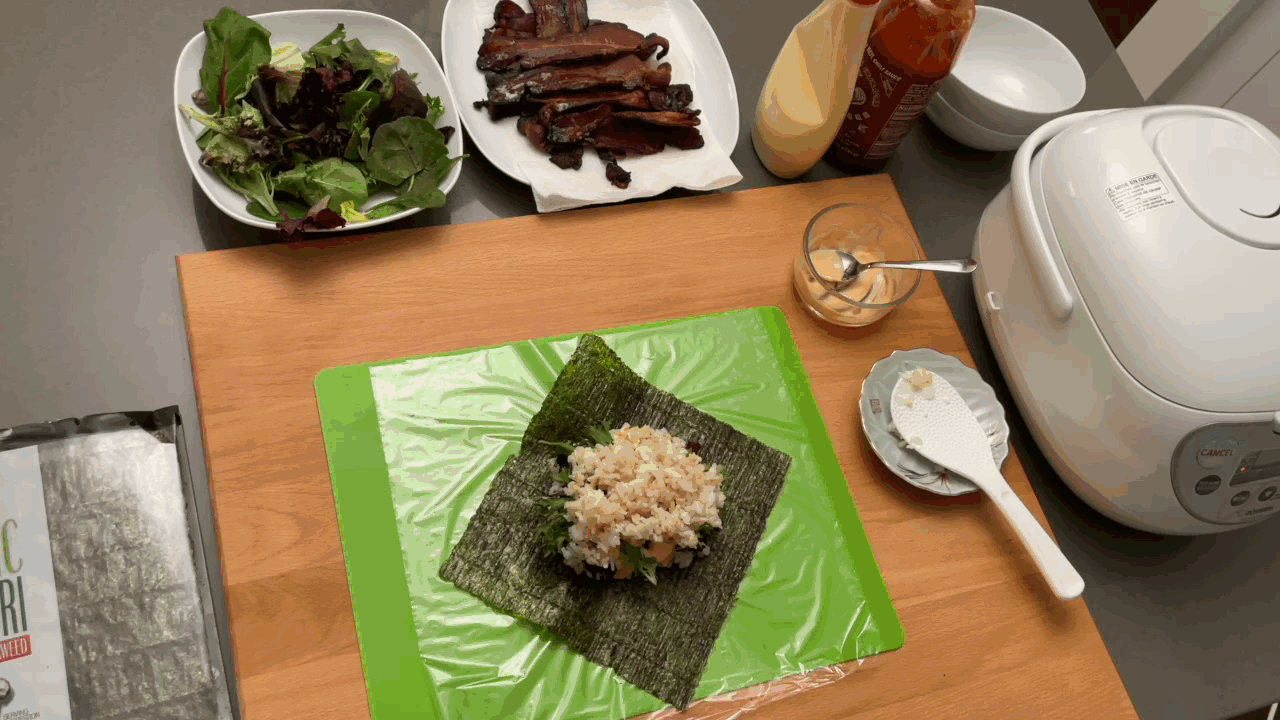Oyster sauce broccoli beef with a Japanese flare! A little bit sweeter, and I believe has better texture by skipping the cornstarch. Enjoy this dish with a pot of rice, and you have a complete meal!
List of Ingredients
4-5 servings
- ¾-1 lbs. Flank steak, thinly sliced (~¼ inch thick)
- ¾-1 lbs. Broccoli, use both the crown and stem
- ~3-4 Stems green onion, cut into 1 inch lengths
- 2 Cloves garlic, peeled and minced
- 1 Tsp Fresh ginger, peeled and grated
- 3 Tbsp Oyster sauce
- 1 Tbsp Sake, least expensive works
- 1 Tbsp Soy sauce or tamari sauce
- 1 Tbsp + 1 Tsp Sugar
- 1/2 Tsp Chicken bouillon (Optional, however if using, Better Than Bouillon
- Roasted Chicken Base recommended)
- Salt and ground black pepper to sprinkle onto the flank steak while cooking (Diamond Crystal Kosher salt recommended)
- 2 Tbsp Water for steaming broccoli
- Neutral Oil for frying
List of Tools
- Mixing bowls
- Cutting board and knife
- Paring knife or spoon
- Fine grater or microplane grater
- Measuring cup, spoon for stirring, and a spatula
- Measuring spoons and a measuring glass is helpful
- Two spatulas and a resting plate
- Cooking chopsticks
- Wok-like pan with a lid
- Serving dish
Directions
Prepare the meat
Remove any extra fat and slice the flank steak across the grain into pieces about ~3” wide x ~¼” thick. (Typically involves cutting the flank steak in half down the grain, then slicing across the grain. It depends on the width of the flank steak.) Set aside in a bowl.
Prepare the broccoli
Rinse and cut the broccoli where the stem meets the base of the crown. Remove the tough skin off the stem by slicing down the sides. Cut the stem into disks just under ¼” inch thick. Slice the large florets into smaller florets by cutting the floret stems in half lengthwise, slicing more if necessary. Try to keep the pieces similar in size to cook evenly. Set aside the cut broccoli pieces in a separate bowl.
Prepare green onions, garlic and ginger
Clean and cut the green onions into 1 inch lengths. Peel and mince the garlic. Peel and grate the ginger. Set everything aside in a small bowl.
Prepare the sauce
Mix the oyster sauce, sake, soy sauce, sugar and chicken bouillon (if using) into a small measuring cup. Set aside.
Time to Cook
In a large wok-like pan, add 1 Tbsp of oil and heat on medium to medium-high. Add the meat and lightly season w/ salt and ground black pepper. Fry until almost fully cooked, leaving some pink. Remove the meat from the pan into a bowl and set aside.
Throw out any remaining juice in the pan and wipe the pan clean with a paper towel. Add another tablespoon of oil and turn the stove to medium high and add the broccoli.
Fry for 1-2 minutes turning over once until bright green. Add ~2 Tbs water and cover immediately. Steam for ~2-4 minutes. (Careful not to overcook.) Remove the broccoli and place into a bowl and set aside.
Add another tablespoon of oil and fry the green onions, garlic and ginger together on medium heat. Now add back the meat and finish cooking the meat if necessary. Then quickly add the broccoli and pour the sauce over everything, tossing thoroughly using spatulas. Cook to desired doneness or about 1 minute, again careful not to overcook.
Enjoy!
Don’t forget to submit a photo of your creations! You can upload your photos using my Contact form!



























